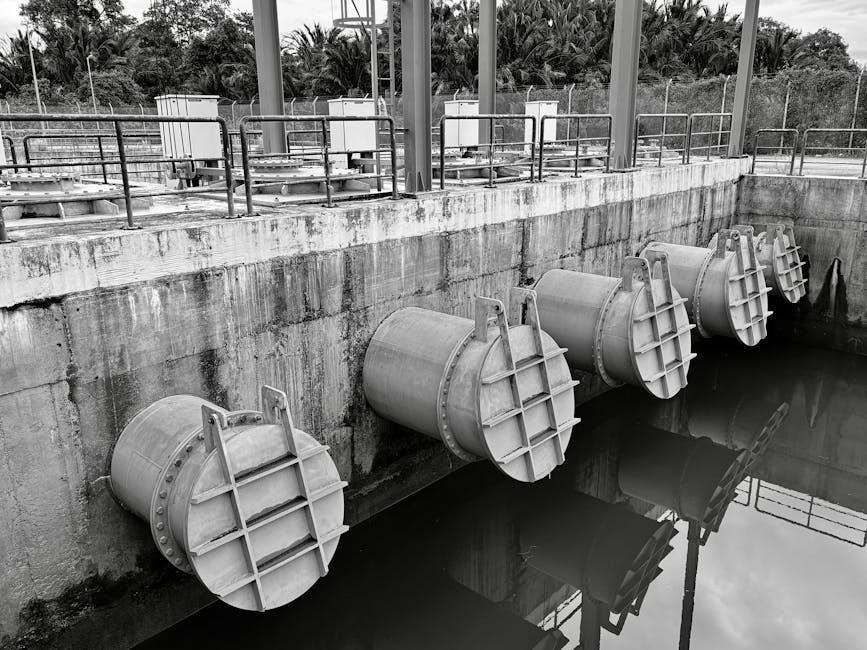The skeletal system, comprising 206 bones, provides structural support, protects vital organs, and facilitates movement by serving as muscle attachment points. It also produces blood cells and stores calcium, essential for overall health and bodily functions.
Overview of the Skeletal System
The skeletal system is a complex framework of 206 bones that forms the body’s internal structure. It functions as an endoskeleton, with bones located beneath skin and muscles, unlike exoskeletons in insects. Composed of dense connective tissue, primarily collagen, bones are dynamic, living organs containing blood vessels, nerves, and marrow. This system plays a crucial role in supporting the body, protecting internal organs, and facilitating movement through muscle attachment. It also serves as a storage site for minerals like calcium and phosphate, essential for overall health, and is involved in blood cell production, highlighting its importance beyond structural support.
Importance of the Skeletal System in the Human Body
The skeletal system is vital for maintaining body shape, supporting weight, and providing a framework for muscles to attach, enabling movement. It protects critical organs such as the brain and heart by encasing them in the skull and ribcage. Additionally, it plays a role in blood cell production and mineral storage, with bones acting as reservoirs for calcium and phosphate. These functions collectively ensure the body’s structural integrity, facilitate mobility, and contribute to overall health, making the skeletal system indispensable for survival and proper bodily functions.

Functions of the Skeletal System
The skeletal system provides structural support, protects internal organs, facilitates movement, regulates calcium and phosphate levels, produces blood cells, and stores essential minerals for bodily functions.
Support and Protection of Body Structures
The skeletal system provides a framework for the body, enabling it to maintain posture and support soft tissues. Bones act as levers, offering attachment points for muscles and tendons, facilitating movement. The skull protects the brain, while the ribcage shields the heart, lungs, and liver. Vertebrae safeguard the spinal cord, ensuring nerve function. This system also absorbs and distributes external forces, preventing damage to internal organs. By offering structural integrity, the skeletal system ensures the body operates efficiently, maintaining overall health and stability.
Facilitating Movement Through Muscle Attachment
The skeletal system enables movement by serving as an anchor for muscles, tendons, and ligaments. Bones act as levers, amplifying the force generated by muscle contractions. When muscles contract, they pull on bones, creating movement at joints. This system allows for a wide range of motion, from walking and running to fine motor activities like writing. The arrangement of bones and muscles ensures efficient movement, with different muscle groups working synergistically to achieve precise control and coordination. This integration is essential for maintaining mobility and performing daily activities effectively;
Regulating Calcium and Phosphate Levels in the Body
The skeletal system plays a crucial role in maintaining calcium and phosphate balance. Bones act as a reservoir for these minerals, releasing them into the bloodstream when needed. This regulation is essential for nerve and muscle function, including heart contractions. Hormones like parathyroid hormone and calcitriol help control these levels, ensuring proper mineral distribution. The skeletal system stores excess calcium and releases it as required, preventing imbalances that could lead to conditions like osteoporosis or hypercalcemia. This function is vital for overall metabolic health and bodily function. Bones continuously remodel to maintain this balance effectively.

Components of the Skeletal System
The skeletal system comprises 206 bones, joints, and ligaments. Bones are dynamic, living organs made of collagen and minerals, providing structural support, protection, and blood cell production.
Bones: Structure and Types
Bones are rigid, calcified organs composed of collagen and minerals like calcium and phosphate. Their structure includes a periosteum (outer layer), cortex (dense outer shell), trabecular bone (spongy inner tissue), and medullary cavity (central space). Bones are categorized into five types: long (e.g., femur), short (e.g., carpals), flat (e.g., skull bones), irregular (e.g., vertebrae), and sesamoid (e.g., patella). Each type performs specific functions, such as supporting body weight, protecting organs, or facilitating movement, showcasing their adaptability and essential role in the skeletal system.
Joints and Their Role in Movement
Joints, or articulations, are points where two or more bones meet, enabling movement and stability. They are classified into three types: synovial (freely movable), cartilaginous (partially movable), and fibrous (immovable). Synovial joints, like the knee and shoulder, facilitate extensive movement due to a synovial cavity and fluid. Cartilaginous joints, such as intervertebral discs, allow limited movement, while fibrous joints, like skull sutures, provide structural stability. Joints are essential for locomotion, flexibility, and maintaining posture, making them a vital component of the skeletal system’s functionality.

Bone Tissue and Development
Bone tissue consists of compact and spongy bone, formed by collagen and cells like osteoblasts and osteoclasts. Development begins with ossification, forming bones through growth and remodeling processes;
Structure of Bone Tissue
Bone tissue is composed of compact bone and spongy bone. Compact bone forms the dense outer layer, providing strength and protection, while spongy bone, found inside, contains bone marrow. The periosteum, a fibrous membrane, covers the outer surface, aiding in bone growth and repair. Bone tissue consists of osteocytes, osteoblasts, and osteoclasts, which regulate bone formation, maintenance, and resorption. Osteocytes, mature bone cells, are embedded in the bone matrix, a hardened substance of collagen and minerals like calcium and phosphate. This structure ensures bones are durable yet adaptable, supporting the body’s needs for movement and protection.
Process of Bone Growth and Remodeling
Bone growth occurs through endochondral ossification, where cartilage templates are gradually replaced by bone tissue. Long bones grow in length at the epiphyseal plates, while appositional growth increases thickness. Remodeling involves osteoclasts resorbing old bone and osteoblasts forming new bone tissue. This continuous process repairs microfractures, adapts to stress, and regulates calcium levels. Bone remodeling is essential for maintaining skeletal health, enabling bones to remain strong and functional throughout life. This dynamic process ensures the skeleton adapts to changing demands while preserving its structural integrity.

Common Disorders and Diseases of the Skeletal System
The skeletal system is susceptible to various disorders, including osteoarthritis, rheumatoid arthritis, and spinal deformities like scoliosis. Metabolic bone diseases, such as osteomalacia, also affect bone health.
Osteoporosis and Its Impact on Bone Health
Osteoporosis is a progressive skeletal disorder characterized by a decrease in bone density and strength, leading to an increased risk of fractures. It occurs when the rate of bone resorption surpasses bone formation. Common causes include hormonal changes, calcium or vitamin D deficiency, and aging. Symptoms may include back pain, loss of height, and increased susceptibility to fractures, particularly in the hips, spine, and wrists. Osteoporosis significantly impacts quality of life, especially in the elderly, by impairing mobility and independence. Early diagnosis and treatment are crucial to prevent further bone deterioration and reduce fracture risk. Lifestyle changes, such as a calcium-rich diet and weight-bearing exercises, along with medical treatments like bisphosphonates, can help manage the condition effectively.
Fractures and Their Types
Fractures are breaks in bones caused by trauma, stress, or underlying conditions like osteoporosis. They are classified into types such as stress fractures (small cracks), compression fractures (common in the spine), and comminuted fractures (bone breaks into multiple pieces). Symptoms include pain, swelling, and limited mobility. Diagnosis involves imaging techniques like X-rays or MRIs; Treatment varies, ranging from casts and splints to surgical interventions. Proper care is essential to prevent complications and ensure complete healing, restoring bone strength and function. Early medical attention is crucial to avoid long-term mobility issues.
The Skeletal System in Movement and Support
The skeletal system provides structural support and facilitates movement by acting as a framework for muscle attachment, enabling motion through leverage and joint articulation, while maintaining posture.
Role of Bones in Providing Structural Support
Bones form the framework of the body, providing structural support by acting as a foundation for muscles, skin, and organs. They distribute weight evenly, preventing collapse, and serve as levers for movement. The skeletal system’s rigid structure allows it to bear the body’s weight and maintain posture. Bones also protect internal organs, such as the skull safeguarding the brain and the ribcage shielding the heart and lungs. This structural integrity is essential for overall bodily function, enabling movement and maintaining balance while protecting vital systems.
Interaction Between Bones and Muscles for Movement
Bones and muscles work together to enable movement through a system of levers and pulleys. Muscles attach to bones via tendons, contracting to pull bones in specific directions. This interaction creates movement at joints, where bones articulate. The skeletal system provides a stable base for muscle action, allowing precise and powerful movements; For example, leg muscles pull on bones during walking or running, while arm muscles enable lifting and reaching. This dynamic partnership between bones and muscles is essential for locomotion, posture, and maintaining balance.
The skeletal system is vital for support, movement, and overall health. For deeper understanding, explore PDF resources like “Bone Tissue and the Skeletal System” by OpenStax or “Anatomy & Physiology” textbooks.
The skeletal system is a complex framework of 206 bones, providing structural support, protecting internal organs, and facilitating movement. It also produces blood cells and stores minerals like calcium. Bones are composed of dense connective tissue, primarily collagen, and contain blood vessels and nerves. The system plays a crucial role in maintaining posture, enabling locomotion, and regulating bodily functions. Disorders like osteoporosis and fractures highlight its vulnerability. Understanding the skeletal system is essential for appreciating its importance in overall health and mobility. For further study, PDF resources like “Bone Tissue and the Skeletal System” by OpenStax offer detailed insights.
Recommended PDF Resources for Further Study
For in-depth understanding, download the PDF “Bone Tissue and the Skeletal System” from OpenStax’s Anatomy and Physiology textbook. This resource provides detailed insights into skeletal functions, bone structure, and development. Additionally, the Teacher’s Manual offers practical exercises and assessments. Other recommended PDFs include “The Skeletal System: Functions and Disorders” and “Bone Health and Remodeling.” These resources are essential for students and researchers seeking comprehensive knowledge on the skeletal system. Ensure to explore these PDFs for a thorough understanding of the topic.